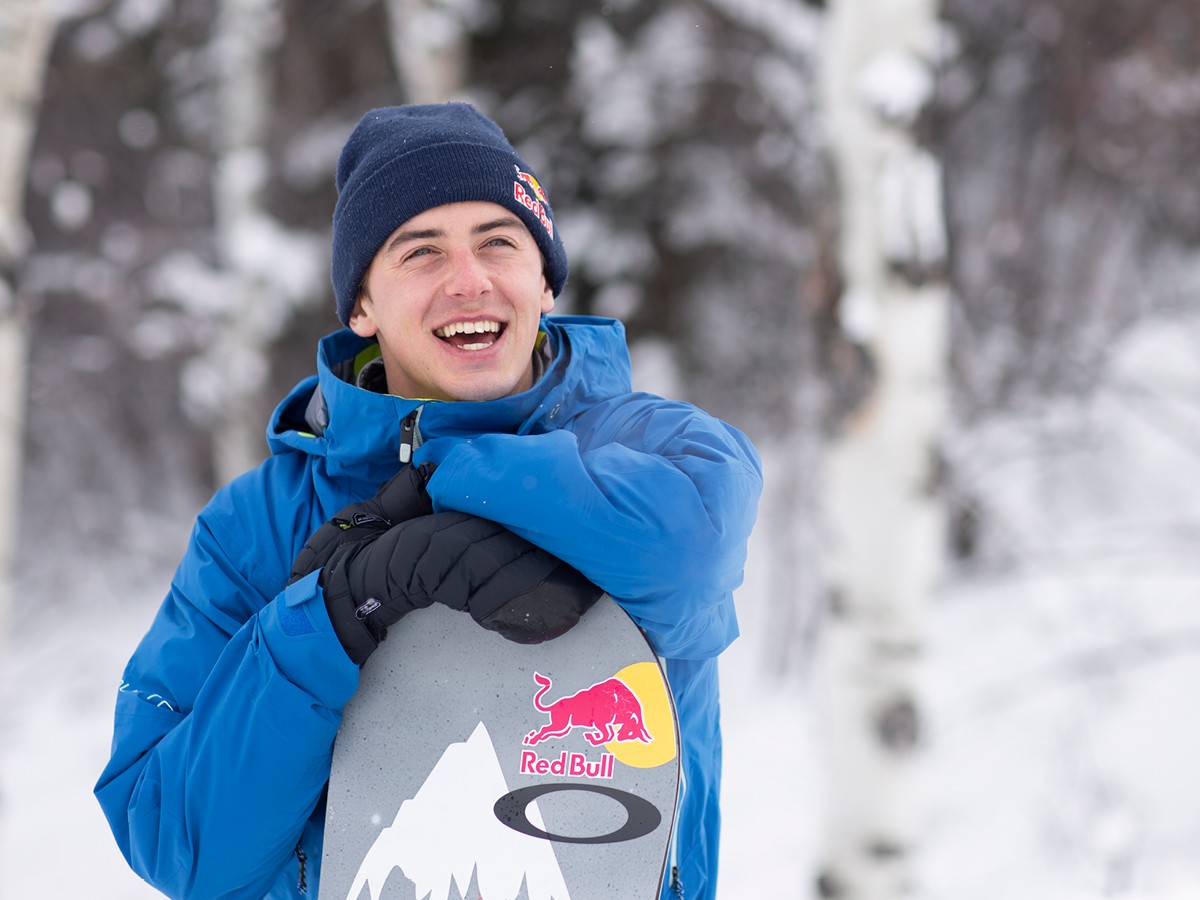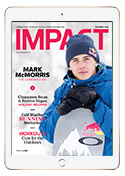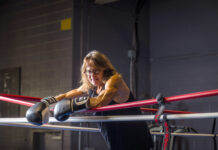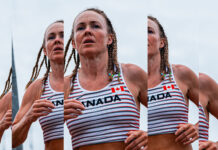It was March 25, 2017 and the last jump of the day for Mark McMorris – a fun day of filming backcountry snowboarding with brother Craig and friends. He had done the jump earlier and knew he had to veer to the right to avoid a cluster of trees, but instead he spun to the left and crashed into the trees. Friends rushed to his aid, a helicopter was called and for the 90 long minutes it took to arrive everyone around him did what they could to keep him warm and his spirits up.
When he arrived at Vancouver General Hospital he was found to have a ruptured spleen, a broken left arm, five cracked ribs, several fractured vertebrae, and a collapsed left lung. Having just secured his place on the Canadian Olympic Team for the 2018 Pyeongchang Winter Olympics the one question he asked when he came to was: “Can I go to the Olympics?”
Fast forward eight months to November 2017 and the Big Air World Cup in Beijing and McMorris was on the podium – with a gold medal. Three months later at Pyeongchang he won his second Slopestyle Olympic Bronze medal. He had made a remarkable recovery.
Chronicled in the documentary UNBROKEN: The Snowboard Life of Mark McMorris, Canada’s most successful snowboarder opens up about his accident and remarkable recovery. In hospital: “I remember slowly looking around and seeing everybody and feeling so happy to be alive.” He is also candidly reflective of what he went through: “I was thinking what am I doing? Why am I even snowboarding if this is what it has taken me to?”
Injuries weren’t new to McMorris – he broke a rib at the X Games in Aspen in 2014, days before training was due to start for the Sochi Olympics, and in 2016 in Los Angeles at an Air & Style event he broke his femur after a difficult landing while attempting a front-side triple cork 1440. On both occasions he fought back with the courage and tenacity that he is so well known for. He won his first Olympic medal at Sochi, and after rehab for his broken leg he was back at the Olympic Big Air test event at Pyeongchang exorcising demons by successfully landing the front-side triple cork 1440.
At 27 years McMorris has a grit and determination rarely seen in a young athlete. How does he manage to come back after all he has been through? “As you heal physically you heal mentally. As I sit there all broken I say to myself I can never do this again, but you get motivated. Luckily, I had a fan base before all of this happened, and they want you to do good and they send positive vibes and affirmations and I say to myself, I have to do this.”

His fan loyalty has hit rock star status (who wouldn’t be envious with 750,000 followers on Instagram, 257,000 on Facebook and 184,000 on Twitter). His boyish good looks and infectious smile makes him the darling of snowboard followers all over the world. His endorsement of, and sponsorship from, numerous products has made him a celebrity. Not bad for a kid from Regina, Saskatchewan who only took up snowboarding after a neighbour gave him a skateboard.
McMorris started snowboarding at the early age of five. He and brother Craig, two years his senior, were taken to Lake Louise by their parents. “My mom wanted us to take ski lessons but early in the summer we were given skateboards as presents. And when we saw snowboards on the wall, we said we wanted to skateboard in the snow, so can you put us in those lessons?” he recalls. “I snowboarded once when I was five and then again at six and seven, but by the time I was eight, nine and 10 I was out every weekend.”
In 2000, McMorris had his first competition in the unglamorous setting of a parking lot. “The local board shop in Saskatchewan set up some scaffolding with railings.” More competitions followed until his first pro competition in 2009. His meteoric rise was beginning. He won his first World Cup slopestyle competition in 2010, made his debut at the 2011 Winter X Games finishing second, and in 2012 at the Winter X Games in Aspen he won both the slopestyle and big air competitions. This put him in the history books as the first snowboarder since American Shaun White in 2009 to win two gold medals. He repeated this performance in the 2015 Winter X Games.
McMorris gravitated towards slopestyle early. “It was a side of snowboarding that caught my eye with all of the manoeuvres in the air. Half-pipe is intriguing to me as well but it is an event I don’t compete in as Canada didn’t have many half-pipes when I was growing up. Half-pipe is expensive to build whereas most of the resorts have jumps and rails which is slopestyle and big air. That’s why all of the kids are participating and I was the early breed of that movement, and I have been lucky enough to invent some things and have good results.”
McMorris explains that snowboarding uses a diverse skill set. “A well respected snowboarder knows all disciplines, strives to be a good all round snowboarder and then specializes in niche events.”
You also have to be extremely fit and mobile, which McMorris has always been because of his love of sports. He played lacrosse, volleyball and hockey growing up and skateboards and surfs when he can. He says core, mobility, strong glutes and quads, and strength to withstand high impact landings are essential for a snowboarder. “We prep ourselves for the worst-case scenario.”
His off season training regime consists of functional and strength based exercises which he says can be ‘not so fun’ but he knows that these are essential for him to not only stay conditioned but recover faster when he does get an injury.
His trainer is Damien Moroney, Director of Rehabilitation at Fortius in Burnaby, BC. Moroney was instrumental in getting McMorris back into shape after his backcountry accident. “I do a lot of Zoom workouts with Damien, who knows the body so well, and you know you are in such good hands with him. He brought me back from my femur fracture and my tree accident and got me to the Olympics. He knows my limits and willpower and pushes me.”
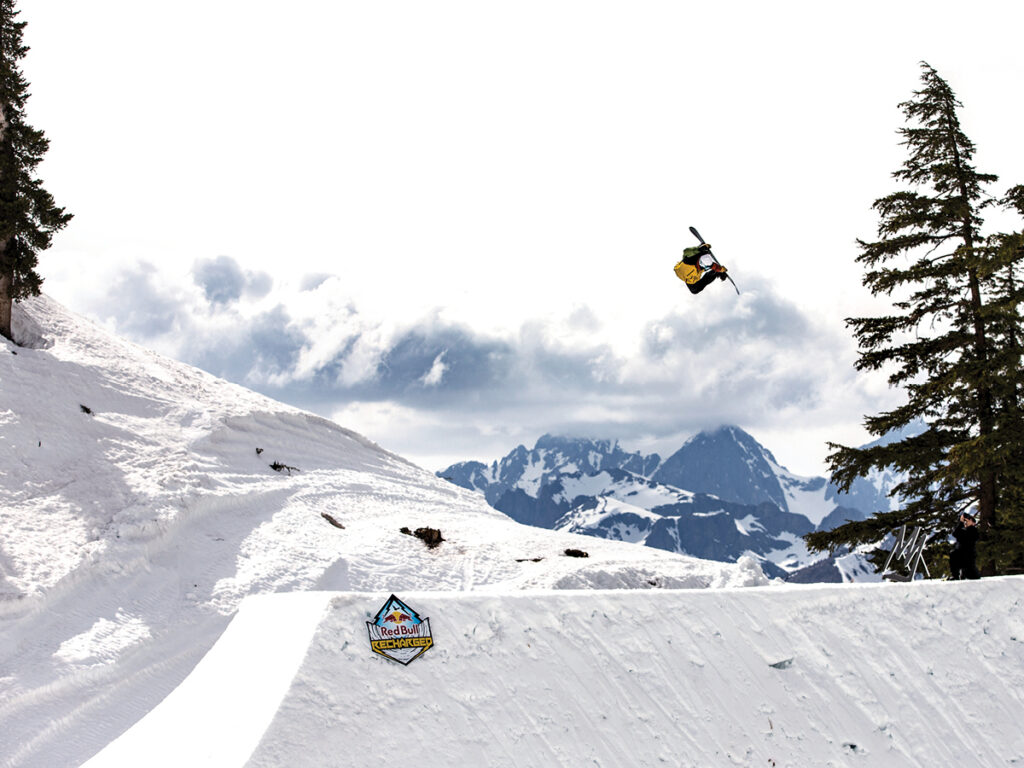
McMorris spends his downtime at his Encinitas, California home and since March, two to three times a week, he does Zoom workouts with Moroney mixing in some fun with the functional. “It may not be crazy weights but low impact workouts that make me stronger and more powerful. We also do fun active stuff like surfing and skateboarding but also make time for the functional movements as well.”
As a kid who got to play a lot of sports he knows the importance of involving youths in sport at an early age. In 2012 he and brother Craig founded the McMorris Foundation with a vision of ‘creating a more affordable, accessible, and inclusive sport culture in Canada’ (www.mcmorrisfoundation.ca). Through a partnership with the Canadian Tire Jumpstart program over $250,000 has been raised to date for youths aspiring for athletic achievement. “We were fortunate that we had the opportunity to play every traditional sport and these taught us important life lessons. We feel every kid should have that opportunity and as someone who makes a living from sport it is hard not to give back. Jumpstart is an amazing foundation and it feels good to give back to the community and kids so they can have opportunities.” When he can, McMorris goes back to Regina in the summer and hangs out with the kids at the skatepark.
Although 2020 has seen many events cancelled, including snowboarding, McMorris was able to start the year making history. In January he won his 20th X Games medal in Oslo inching ahead of Shaun White’s record. It’s now December and McMorris is keeping fit in Encinitas, but he is planning his preparation for the Beijing Winter Olympics in 2022. On his horizon are some World Cup races in Europe and the X Games in January, World Championships in China in February and a World Cup in Calgary in March. But he realizes schedules might change. “I don’t know what to expect but I will be ready and prepared.”
He doesn’t like planning too far ahead, preferring to take each day and event at a time, as he knows there will be bumps in the road. But he does have three goals for the foreseeable future: “to earn a spot on the Olympic team; stay healthy while having fun; and change the shade of my Olympic medal.”
With his passion and tenacity those goals shouldn’t be a problem.
Notable Achievements
| Olympic Games | |
| 2018 Pyeongchang | Bronze medal, Slopestyle |
| 2014 Sochi | Bronze medal, Slopestyle |
| World Championships | |
| 2019 Utah | Silver Medal, Slopestyle |
| 2013 Stoneham | Silver Medal, Slopestyle |
| Winter X Games | |
| 2020 Norway – Big air | Gold Medal |
| 2020 Norway – Slopestyle | Silver Medal |
| 2019 Aspen – Slopestyle | Gold Medal |
| 2020 Aspen – Big air | Silver Medal |
| 2019 Aspen – Big air | Silver Medal |
| 2018 Aspen – Slopestyle | Bronze Medal |
| 2017 Norway – Big air | Gold Medal |
| 2017 Aspen – Big air | Bronze Medal |
| 2017 Aspen – Slopestyle | Bronze Medal |
| 2016 Aspen – Big air | Silver Medal |
| 2016 Aspen – Slopestyle | Gold Medal |
| 2015 Aspen – Big air | Gold Medal |
| 2015 Aspen – Slopestyle | Gold Medal |
| 2014 Aspen – Slopestyle | Silver Medal |
| 2013 Tignes – Slopestyle | Silver Medal |
| 2013 Aspen – Big air | Silver Medal |
| 2013 Aspen – Slopestyle | Gold Medal |
| 2012 Aspen – Big air | Gold Medal |
| 2012 Aspen – Slopestyle | Gold Medal |
| 2011 Aspen – Slopestyle | Silver Medal |
| 2017 ESPY Award Winner | Best Action Sports Male |
| 2017 FIS Crystal Globes | Big Air and Overall Champion |
| 2016 Rider of the Year | Snowboarder Magazine |
Snowboarding Lingo
Slopestyle
Riders perform tricks while descending a course, over obstacles that can include boxes, rails, jumps, jibs, or anything else the board or rider can slide across. Winning a slopestyle contest usually comes from successfully executing the most difficult line on the course mistake-free. However the rider who lands the hardest tricks will not always win over the rider who lands easier tricks on more difficult paths.
Big Air
Riders perform tricks after launching off a man made jump built specifically for the event. Competitors perform tricks in the air, aiming to attain sizable height and distance, all while securing a clean landing. Many competitions also require the rider to do a complex trick but that isn’t always the case. Some competitions are based on height and distance of the launch of the snowboarder.
Half-Pipe
The half-pipe is a semi-circular ditch dug into the mountain or purpose-built ramp made up of snow, with walls between eight and 23 feet (7.0 m). Competitors perform tricks while going from one side to the other and while in the air above the sides of the pipe.
What is a front-side triple cork 1440?
It is a spin off a jump where the rider rotates his body counter-clockwise, opening up the shoulders so that the “front side” is the first side of the body going forward off the jump in the first 90 degrees of the spin. The move consists of four complete rotations (4 x 360 degrees = 1440 degrees).
Photography by Peter Morning and Christian Pondella
IMPACT Magazine’s December 2020 Edition
Read about our top Canadian Olympic snowboarder who returned from injury and is chasing that elusive Olympic Gold! Learn how not to lose your momentum running through the cold and snow, work out with Canada’s Top Fitness Trainers, avoid back pain with one of the world’s most renowned experts and try out our delicious Holiday-themed recipes.


